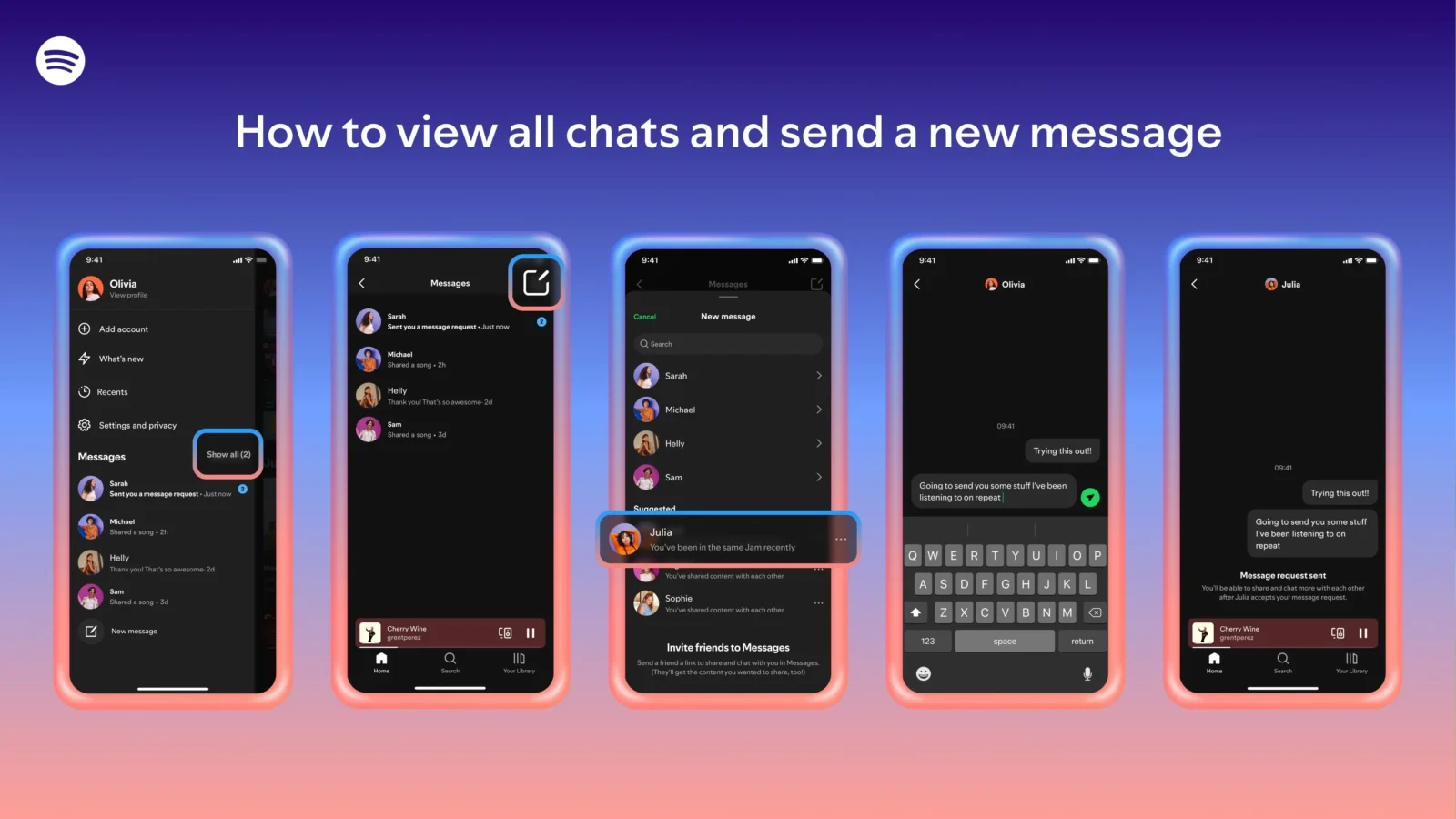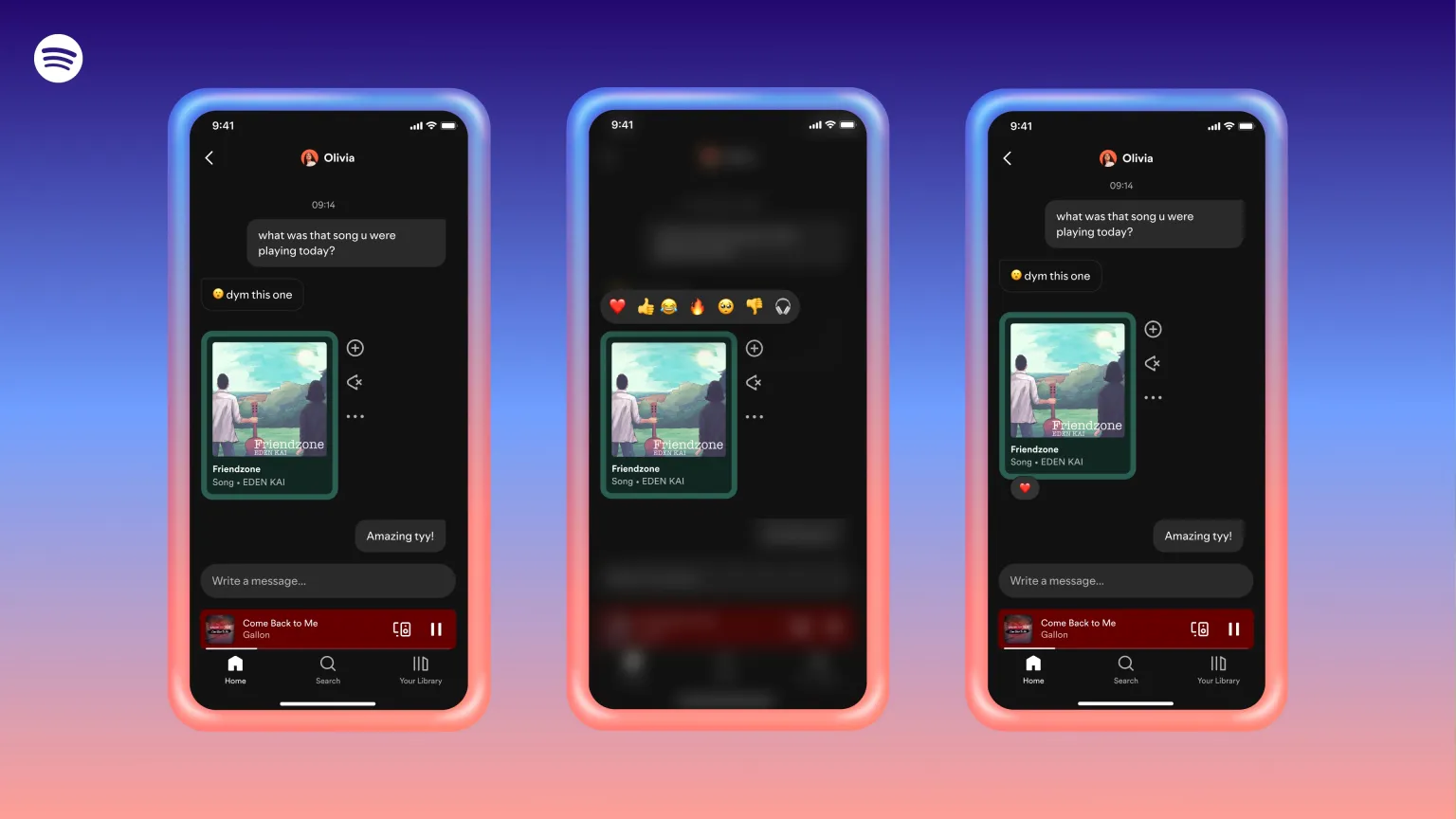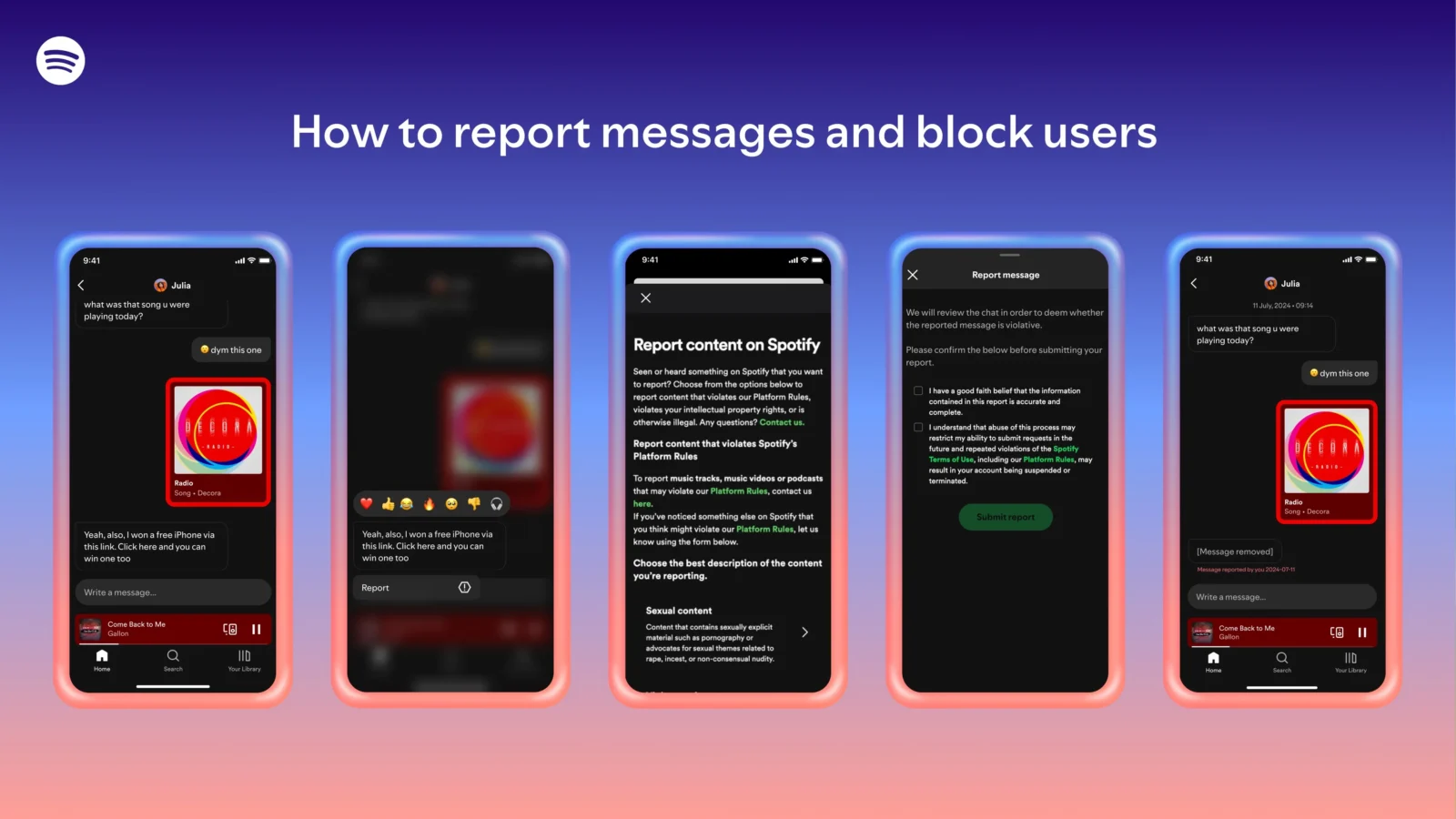Spotify is rolling out a new messaging feature that allows users to chat directly within the app, part of the company’s ongoing push to make its platform more social.
For years, listeners have shared Spotify links through external apps like WhatsApp, Instagram, or Facebook. With in-app messaging, Spotify wants to keep those interactions inside its own ecosystem, while also giving users a way to view the history of songs, albums, and podcasts they’ve shared.

The feature supports only one-on-one conversations, and users can only initiate chats with people they’ve already shared music with. That includes those connected through collaborative playlists, Blends, Jams, or shared plans like Family and Duo. To begin a conversation, a user must send a request, which the recipient has to approve.
Outside Spotify, tapping on a shared link through another app now also gives the option to approve a chat request. Users can additionally send invite links to people in their contacts.
Conversations are accessible by tapping a profile picture and navigating to a new Messages section in the sidebar. Emoji reactions are supported, and Spotify says messages are encrypted at rest and in transit. However, unlike apps such as WhatsApp or Signal, they are not end-to-end encrypted. The company monitors messages for potential violations of its terms of service and allows users to report problematic exchanges.

The rollout is initially limited to mobile users over 16 in select Latin and South American markets, with expansion to the US, Canada, Brazil, the EU, the UK, Australia, and New Zealand expected in the coming weeks. Both free and premium users will have access.
The addition comes after Spotify introduced comments on podcasts last year and a TikTok-style vertical feed emphasizing video discovery. Gustav Söderström, Spotify’s Chief Product and Technology Officer, recently said the app will become “much more interactive,” and this feature reflects that shift.

Still, reactions may be mixed. While messages could encourage more sharing within the app, some users have already expressed frustration that Spotify’s interface feels increasingly cluttered. Others have noted difficulty navigating to music amid a growing array of social and discovery tools. For those who prefer a simpler experience, messages can be disabled in Settings under Privacy and Social.
Spotify’s move highlights the tension between building community features to keep users engaged and maintaining a clean, music-first interface. As the feature expands globally, the company will be watching closely to see whether users embrace the social layer or view it as yet another distraction.






